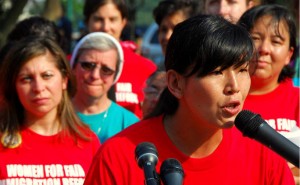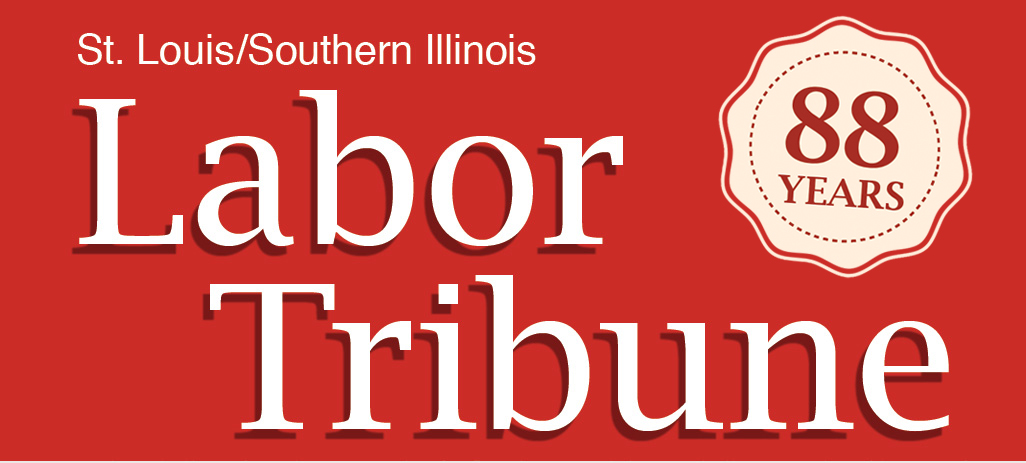Women could save the Labor Movement

–womentogether photo
Women labor leaders like AFT President Randi Weingarten, AFL-CIO Secretary-Treasurer Elizabeth Shuler, AFL-CIO Executive Vice President Emerita Arlene Holt Baker, National Taxi Workers Alliance Executive Director Bhairavi Desai and National Domestic Workers Alliance Director Ai-jen Poo are having a significant impact on the Labor Movement that could bode well for the future.
As Bryce Covert writes in her article for The Nation, How the Rise of Women in Labor Could Save the Movement:
“These women are bringing new ideas and strategies to labor organizing, many of which are borrowed from the women’s movement – like making the connection between what workers face on the job and what they’re dealing with at home.
“They don’t only target corporate bosses but bring together a variety of stakeholders within communities to fight for change in the workplace and beyond,” Covert writes. “And they’re bringing an influx of new members to the movement by reaching out to primarily female workforces that have often been excluded. Most importantly, for a movement accustomed to a steady erosion of power: they’re winning.
“Women have only recently made headway into real positions of power in organized labor, after making slow progress over the movement’s history.
“ ‘The male leadership have been very pleased to accept the assistance and support of women union activists and leaders,’ ” said Ileen Devault, a professor of labor history at Cornell, ‘but they haven’t been so eager to give them actual power in the union movement.’
“The early labor movement organized workers by occupation, in highly gender-segregated workforce, women were often left out of jobs that became unionized,” Covert writes. “Even when women began to be organized, they were relegated to segregated locals.
“By the mid-1930s, union leaders began to realize that success would rest on organizing all workers at a workplace, no matter their gender, race or skill, explained Roosevelt Institute Fellow and labor expert Dorian Warren. That’s when women began to make gains in leadership.
“But women labor leaders aren’t only found at the top: between the late 1980s and late 1990s, the percentage of female lead organizers increased from 12 to 21 percent.
“Meanwhile, the rise of the ‘worker centered movement’ – groups such as the National Domestic Workers Alliance or ROC United that aren’t formal unions but help workers organize and advocate for better conditions – has been more effective at fostering the leadership of women and people of color than traditional unions,’ Warren says.”
Read the rest of Covert’s article here: http://www.thenation.com/article/177880/how-rise-women-labor-could-save-movement.



Leave a Reply